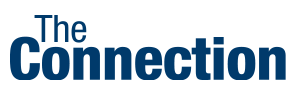
It’s Time to Dry Our Tears and Move On Out of the ‘Waiting Room’
It’s refreshing to me to occasionally see honest viewpoints expressed on LinkedIn regarding the various stresses people feel in their day-to-day work lives. Regardless of its actual existence pre-COVID, work/life balance is officially over, replaced by a blending of work and home culture. And, the norms for what’s acceptable behavior at work have changed dramatically. Remember the days when we thought a barking dog or an interruptive child was a career-limiting move?
The bottom line is that a whole lot of people are hurting, in myriad ways. Dave Evans from Stanford University’s Life Design Lab said in a recent webinar, “Many workers are stuck in ‘the waiting room’ unable to move beyond their loss into a healthy acceptance and therefore are unable to engage in strategy and culture work that will allow us all to create a new beginning.” It’s unlikely that we’ll go back to working the pre-COVID way, even if a vaccine is made available to all by the end of 2021. It’s time to dry our tears, move on and reinvent the workplace experience, making it better than pre-COVID. (Check out this Future of Work view from the BBC)
In my many years in the Silicon Valley, the modus operandi for problem solving has been a triad focus on ‘people, process, and tools’. Having the ‘right’ tools, more often than not, ranks #1 as the way to solve problems or execute strategies. New and/or changed processes hold a distant second place. Problem-solving that starts with the people behavior or the organizational culture side of the equation is rare. Even when people are seen as the most important factor in problem solving, the answer is often seen as more training and communications about the process and tools.
In my view, people and how they are ‘showing up’ must be front and center in all problem-solving. As team leaders and members, we need put much more emphasis on the behavior aspects, especially that which will empower teams to self-directed action as we search for high performance and collective success.
Changing mindsets, which is a precursor to changing behavior starts with mindful team members and leaders asking themselves big questions such as:
- Who am I? What kind of contribution do I want to make? What kind of leader do I aspire to be? What kinds of teams to I want to empower?
It requires teams to ask themselves four key mindfulness questions every day:
- Are we aware and present? Are we engaged? Are we becoming more agile? Are we becoming more adaptive?
This shifts thinking to a new, more attentive mindset. Instead of the typical business process focus of Planning, Organizing, Staffing and Controlling, that we all learned in our early-in-career Management 101 classes, an Attentive Leadership© mindset squarely focuses on Being, Sensing, Leading, and Learning. Let’s explore this mindset and the aspect of Being in more detail. In future articles, we can consider Sensing, Leading, and Learning.
Empowering the Attentive Leader Mindset Loop
The Attentive Leader Mindset Loop© outlines a development journey that illustrates how a mindfulness practice works.
Phase 1 – Awareness: This loop centers on the awareness of self, environment, team, and current leadership challenges by appreciating circumstantial ‘noise’ either imposed by the environment or oneself. A good awareness checklist to use: Do I/we regularly keep my camera(s) on for virtual meetings, silence instant messaging, and forego checking email? Do I/we minimize multitasking? Do I/we conduct self check-ins regularly? And, am I /we aware of and talk openly about the macro and micro cultural influences, my values or other biases that affect how I/we inter-relate with my peers, my boss, the team, and any other stakeholders?
Phase 2 – Action: The action phase encompasses paying attention to my/our immediate real-time emoted behavior and how it may or may not be affecting group trust (human connection, credibility and competency, reliability, authenticity, and integrity), my level of trust (both giving and receiving), and proactively shifting (called Attentive Shifting©) between circumstantially appropriate leadership styles and back again, as the situation requires. The action phase delineates when it is important to be leading or acting transactionally (i.e. more directive), and when to be leading or acting in a transformational way. (i.e. more supportive and expressing vulnerability)
Phase 3 – Reflection: The third phase involves deliberate reflection, practiced and learned via the Attentive Pause©. The attentive pause is a process where individuals or a team stops, takes a deep breath, and asks itself reflective, thought-provoking questions centered around what’s working and what’s not. Other questions may include:
- “Why did this affect me internally?“ “How did, or could, this affect my/our behavior externally?” How can I/we use this reflection to best help the current situation? What should I/we do differently? What new skills do I/we need? Where should I/we focus our efforts now?
Capturing the results of these inquiries in a psychologically safe place and manner encourages the ‘elephants in the room’ to be outed and helps uncover systemic issues that hurt team effectiveness and, conversely, can drive proactive innovation.
Cultivating being in a remote work environment.
Most companies have needed to re-invent ‘the meeting’ for a very long time. The remote workplace affords the opportunity to do so. Here are some tactical suggestions to make meetings more productive, less tedious, and more enjoyable.
- Extend important meetings to 90 instead of 60 minutes so that adequate time can be added for needed front-end and back-end human connection rituals such as team check-ins, mindfulness centering exercises, meeting quality /usefulness feedback activities.
- Modify daily schedules to intersperse big team meetings with small 15-20 ‘meet-and-greets,’ or individual check-ins. The goal is to have enough untethered time for innovation. Eight hours of back-to-back meetings are exhausting and reduce productive work/think time from what I have witnessed.
- Ban all scope/schedule/status and general business update topics. This information can either be moved to online discussion forums, transformed into digital scorecards and dashboards with the program manager, or initiate leader-led office hours for providing direct feedback and input.
- Dashboards and scorecards need to be digital, accessible by everyone, and have open, real-time dialogue enhancements and options to integrate insights and facilitate implications ideation. By doing so, related meeting reviews can target discussions to brainstorming, ideating solution options, gathering insights or resolving challenges.
- Put meeting management online. In addition to minutes and action items, collaborative digital toolsets should be included, so attendees can prepare for the meeting, and those who didn’t attend can catch-up quickly.
In order to make this work and measure progress, it helps if a proactive assessment is conducted upfront that assesses the nature and extent of Being practices in the present culture state. With the assessment, the work can be directed to the largest gaps between what’s needed and what’s happening now and measure progress that is being made. In our next article, we’ll take a look at the Sensing Attentive Leadership© technique and its power in helping or hindering this new way of working and some ideas for how to shape more agile and adaptive work cultures.
Co-Authored by Gaye I. Clemson and Dana de Nault Psy.D
P.S. We’d love to hear your feedback on our comments regarding Being Attentive Leadership© techniques and learn what is working for you and your team! Feel free to comment here or reach out to either of us via email to Gaye at [email protected], or Dana at [email protected] Holler with any questions!







Be the first to comment